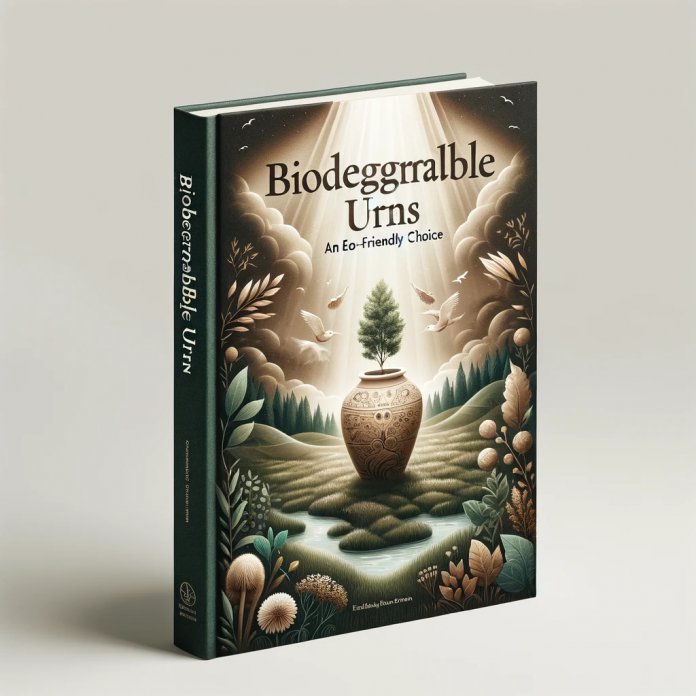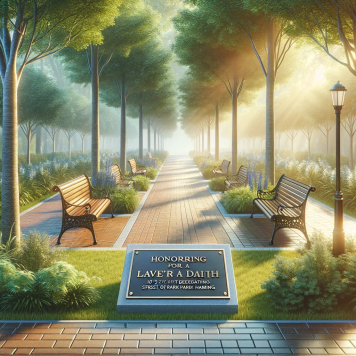As society becomes more conscious of its environmental impact, many are seeking eco-friendly alternatives in all aspects of life, including end-of-life rituals. One such alternative is the use of biodegradable urns for the containment of cremation ashes. These urns provide a way to honor loved ones while minimizing environmental harm.
The Rise of Eco-Friendly Funerals
Traditional burial methods have been scrutinized for their environmental impact. Embalming fluids, metal caskets, and concrete burial vaults can all contribute to soil and water pollution. As a result, many are turning towards more eco-friendly options, such as green burials and cremation.
Cremation, while more environmentally friendly than traditional burials, still has an impact. The energy used in the cremation process and the emissions released can contribute to air pollution. However, the use of biodegradable urns can help to offset some of this impact.
What Are Biodegradable Urns?
Biodegradable urns are containers designed to hold cremation ashes that will decompose naturally over time. They are typically made from sustainable and organic materials such as paper, salt, plant fibers, or untreated wood. These urns are designed to break down when buried in the ground or placed in water, returning the ashes to the earth in a respectful and eco-friendly manner.
There are a variety of biodegradable urns available, each offering unique benefits. Some are designed to dissolve in water, making them ideal for sea burials. Others are designed to be buried in the ground, where they will decompose over time. Some even contain seeds, transforming the burial site into a living memorial in the form of a tree or plant.
Benefits of Biodegradable Urns
Environmental Impact
One of the primary benefits of biodegradable urns is their minimal environmental impact. Unlike traditional urns, which are often made from metal or plastic, biodegradable urns break down naturally over time. This means they won't contribute to landfill waste or release harmful chemicals as they decompose.
Additionally, the materials used to make biodegradable urns are often sustainably sourced. This means that their production has a smaller carbon footprint than that of traditional urns.
Creating a Living Memorial
Biodegradable urns that contain seeds allow for the creation of a living memorial. As the urn decomposes, the seeds are planted in the surrounding soil. Over time, these seeds can grow into a tree or plant, creating a living, breathing tribute to the deceased.
This not only provides a unique and personal way to remember a loved one, but also contributes to the local ecosystem. The resulting tree or plant can provide habitat for wildlife, absorb carbon dioxide, and produce oxygen, further enhancing the environmental benefits of a biodegradable urn.
Choosing the Right Biodegradable Urn
When choosing a biodegradable urn, there are several factors to consider. The first is the type of material. Different materials will decompose at different rates and in different conditions. For example, a salt urn will dissolve quickly in water, while a wood urn will take longer to decompose in the ground.
Another factor to consider is the desired location for the urn. If you plan to scatter the ashes at sea, a water-soluble urn may be the best choice. If you prefer a land burial, an urn designed to be buried in the ground may be more suitable.
Finally, consider whether you want to create a living memorial. If so, look for an urn that includes seeds. Be sure to choose a species of plant or tree that is suitable for the climate and soil conditions where the urn will be placed.
Conclusion
As we become more aware of our environmental impact, it's important to consider eco-friendly options in all aspects of life, including our end-of-life rituals. Biodegradable urns offer a way to honor our loved ones while minimizing our environmental footprint. With a variety of options available, there's a biodegradable urn to suit every preference and need.


-banner.png)





